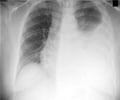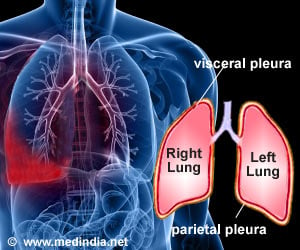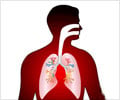Frequently Asked Questions
1. Which doctor should I consult for pleurisy?You can visit a chest specialist or a pulmonologist in case of symptoms of pleurisy.
2. What are other conditions that affect the pleural space?
Other disorders that affect the pleura and pleural space include:
- Pneumothorax, where there is excessive air accumulation in the pleural space
- Hemothorax, where there is blood in the pleural space, often due to trauma or disease including cancer
- Pleural effusion, where excess fluid accumulates in the pleural space
3. What are the symptoms of pleurisy?
Symptoms include sharp chest pain, especially during breathing or coughing, shortness of breath, and, in some cases, fever.
4. Is pleurisy contagious?
Pleurisy by itself is not contagious, but there is a chance that the underlying condition causing it may be an infection, in which case, it can spread to other individuals.
5. What is pleurisy chest pain?
Pleurisy causes sharp chest pain that worsens during breathing. The pain may also be felt in the back or shoulder. If you are experiencing back pain in conjunction with pleurisy, it is important to consult a healthcare professional for proper diagnosis and treatment.
6. Is pleurisy a sign of COVID-19?
Pleurisy can occur as a symptom of respiratory infections, including COVID-19, which is typically sharp and worsens with breathing. It is important to seek medical attention for an accurate diagnosis.
7. How is pleurisy diagnosed?
Diagnosis involves a thorough medical history, physical examination, imaging studies (X-rays, CT scans), and sometimes blood tests.
8. What is the recovery time for pleurisy?
The recovery time varies, but many people start feeling better within a few days to weeks with appropriate treatment.
9. Can pleurisy lead to complications?
Yes, complications may include pleural effusion, pneumonia, and, in chronic cases, pleural thickening or adhesions.
10. Can pleurisy be prevented?
Preventive measures include avoiding respiratory infections, maintaining good respiratory hygiene, and seeking prompt treatment for underlying conditions that could lead to pleurisy.
11. How to treat pleurisy?
Pleurisy is treated once the underlying illness is managed. Treatment includes rest, painkillers, and treatment of the underlying condition. Pleural effusion if present should be drained if necessary.
12. What helps pleurisy?
Painkillers (NSAIDs) to manage pain and inflammation. Cough suppressants, to suppress dry cough. Adequate rest is advised.
13. What is the pleurisy of the diaphragm?
Pleurisy of the diaphragm, also known as diaphragmatic pleurisy, refers to inflammation of the pleura, which is the membrane that surrounds the lungs, specifically in the region of the diaphragm. This condition can lead to chest pain that is often exacerbated by breathing or coughing.
14. What is the pleurisy medical procedure that is followed when diagnosed with pleurisy?
Thoracentesis /pleural tap, needle thoracostomy, or needle decompression (often used term), is an invasive medical procedure to remove fluid or air from the pleural space for diagnostic or therapeutic purposes. Thoracentesis is done to determine the cause of inflammation by testing pleural fluid.












